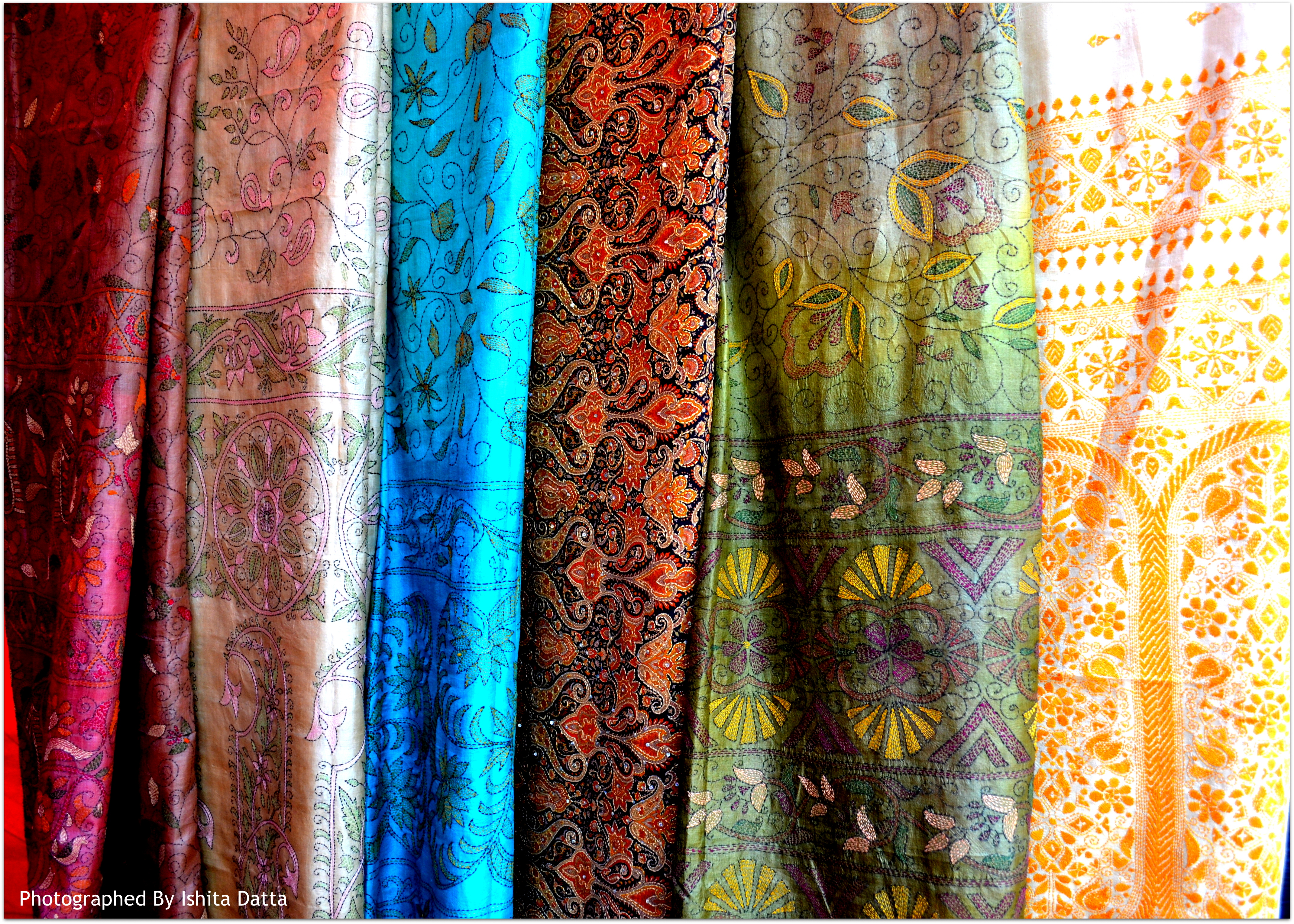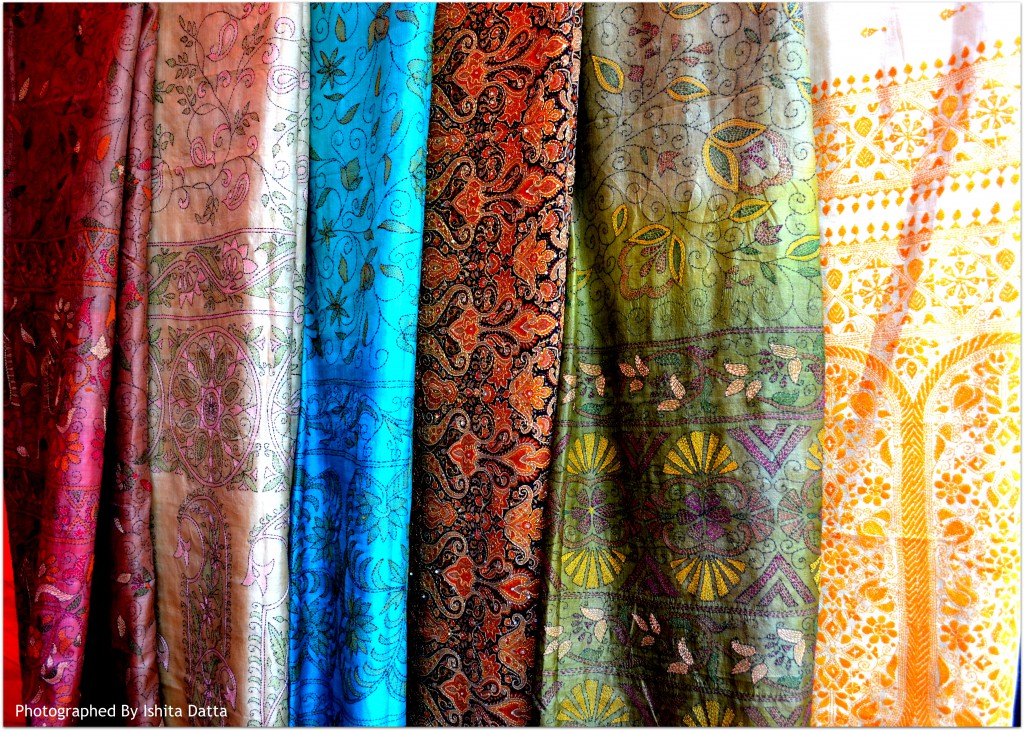
Unsung Tales of Kantha
My journey to Shantiniketan would always be a memorable trip. Not because it is the hometown of Gurudev Rabindranath Tagore who is closely associated with the Bengali culture, but also because the city introduced me to the charismatic art of Kantha embroidery. Amidst the lush greenery and muddy huts, as I drove deep into the city I reached a place called Amar Kutir – a co-operative society that promotes arts and crafts.
I was completely awestruck by the intricacies of thread work woven into different textiles. Space exhibited a vivacious collection of sarees and shawls for women, and an assortment of dhoti kurta and Kurta pajama for men. Every piece of clothing looked resplendent with delicate Kantha embroidery, telling a distinguishing tale.
Essentially, Kantha is considered as women’s art. Hailing from the land of West Bengal, today Shantiniketan is known as the hub of this fine embroidery work. During my visit to that place, I got an insight on how passionately and with dedication, the women dwelling in the small city of Shantiniketan create Kantha embroidered textiles. When inquired, I was informed that one Kantha embroidered saree takes approximately three months of time to complete. Use of different colored threads to create motifs by running the stitch over the entire saree makes it a unique piece of art.
My fascination for Kantha stitch kept on increasing with time. I still remember that after earning my first salary, I gifted a Kantha embroidered saree to my mother. It is a sandalwood hued saree with Kantha embroidered motifs in the form of geometric patterns, mythological characters, flowers, and paisleys. She still flaunts that drape with elan and I know she will preserve it as an heirloom treasure which she will certainly (at least I hope she does) pass it down to me after my marriage. 🙂
Categories: Ethnic Alley, Street Clothing

